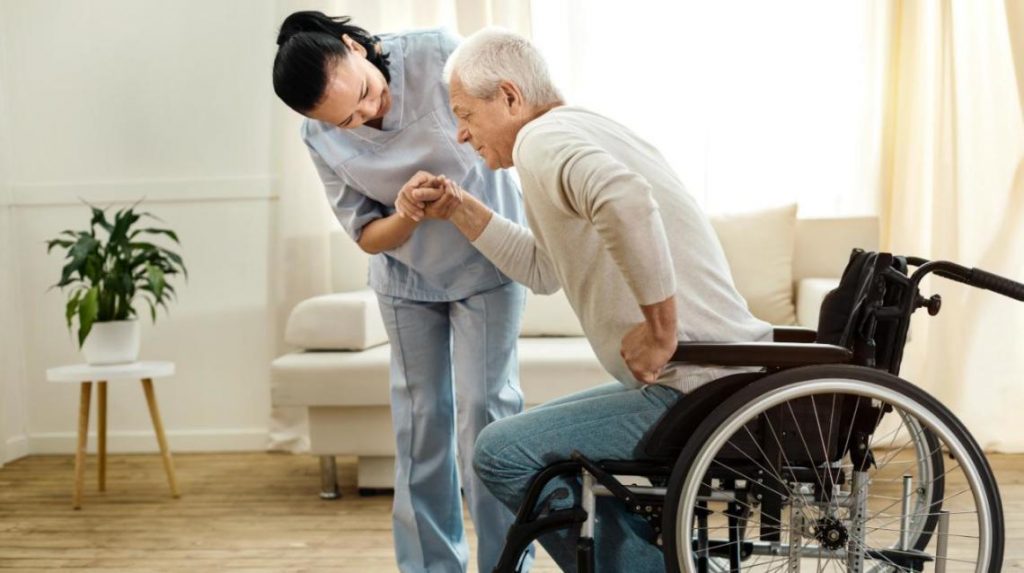
Paralysis is a loss of strength in and control over a muscle or group of muscles in a part of the body. Most of the time, this is not due to a problem with the muscles themselves. It is more likely due to a problem somewhere along the chain of nerve cells that runs from the body part to your brain and back again. These nerve cells deliver the signals for your muscles to move.
Muscle movement is controlled by trigger signals relayed from the brain. When any part of the relay system — such as the brain, spinal cord, nerves, or junction between the nerve and the muscle — is damaged, the signals to move do not make it through to the muscles and paralysis results. There are many ways the relay system can be damaged.
A person can be born with paralysis due to a birth defect such as spina bifida, which occurs when the brain, spinal cord, and/or the covering that protects them do not form the right way. In most cases, people get paralysis as the result of an accident or a medical condition that affects the way muscles and nerves function. The most common causes of paralysis include:
- Stroke
- Spinal cord injury
- Head injury
- Multiple sclerosis
Some other causes include:
- Cerebral palsy
- Guillain-Barré syndrome
- Peripheral neuropathy
- Toxins/poisons
- ALS (Lou Gehrig’s disease)
Symptoms of paralysis may vary based on the cause, but are often easy to spot. A person born paralyzed due to a birth defect, or paralyzed suddenly due to a stroke or spinal cord injury, will be partially or totally unable to move the affected body parts. At the same time, the person may experience muscle stiffness and decreased feeling in the affected body parts.
A person who becomes paralyzed due to a medical condition might lose muscle control and feeling slowly. The person might feel tingling or numbing sensations or muscle cramps before losing control of his or her muscles.
Because paralysis can happen to any muscle or group of muscles, many body functions can be affected. Some of the problems that can occur along with paralysis include:
- Problems with blood flow, breathing, and heart rate
- Changes in the normal function of organs, glands, and other tissues
- Changes to muscles, joints, and bones
- Skin injuries and pressure sores
- Blood clots in the legs
- Loss of urine and bowel control
- Sexual problems
- Problems speaking or swallowing
- Behavior and mood changes
Diagnosing paralysis is often easy to do because the main symptom — loss of muscle control in a body area — is obvious. An important part of the diagnosis is to determine the cause of the paralysis. This can be relatively straightforward if the paralysis occurs after an event such as a stroke or spinal cord injury. Sometimes, the doctor might want to learn more about the injury that’s causing the paralysis, the degree of the paralysis, and/or the state of the nerves involved. To do that, the doctor might use one or more of these tests:
- X-ray: This test uses small amounts of radiation to produce detailed images of the dense structures inside the body, such as the bones.
- CT scan: CT uses computers to combine many X-ray images into cross-sectional views of the inside of the body.
- MRI: MRI uses a large magnet, radio waves, and a computer to create clear images of the body.
- Myelography: This test uses a contrast dye that is injected into the spinal canal to make the nerves show up very clearly on an X-ray, CT scan, or MRI.
- Electromyography (EMG): This test is used to measure the electrical activity in the muscles and nerves.
- Spinal tap: A long needle is injected into the spine to collect spinal fluid.
Currently, there is no cure for paralysis itself. In certain cases, some or all muscle control and feeling returns on its own or after treatment of the cause for the paralysis. For example, spontaneous recovery often occurs in cases of Bell’s palsy, a temporary paralysis of the face. It might also occur to some extent with treatment after a stroke. Sometimes, treatment is important to prevent further worsening of paralysis, for example in multiple sclerosis.
Rehabilitation is often recommended to address problems that can occur as a consequence of the paralysis, to enable the paralyzed person to live as independently as possible and to provide the person with a high quality of life. Some of the rehabilitation treatments used for people with paralysis include:
- Physical therapy uses treatments such as heat, massage, and exercise to stimulate nerves and muscles.
- Occupational therapy concentrates on ways to perform activities of daily living.
- Mobility aids include manual and electric wheelchairs and scooters.
- Supportive devices include braces, canes, and walkers.
- Assistive technology such as voice-activated computers, lighting systems, and telephones.
- Adaptive equipment such as special eating utensils and controls for driving a car.




